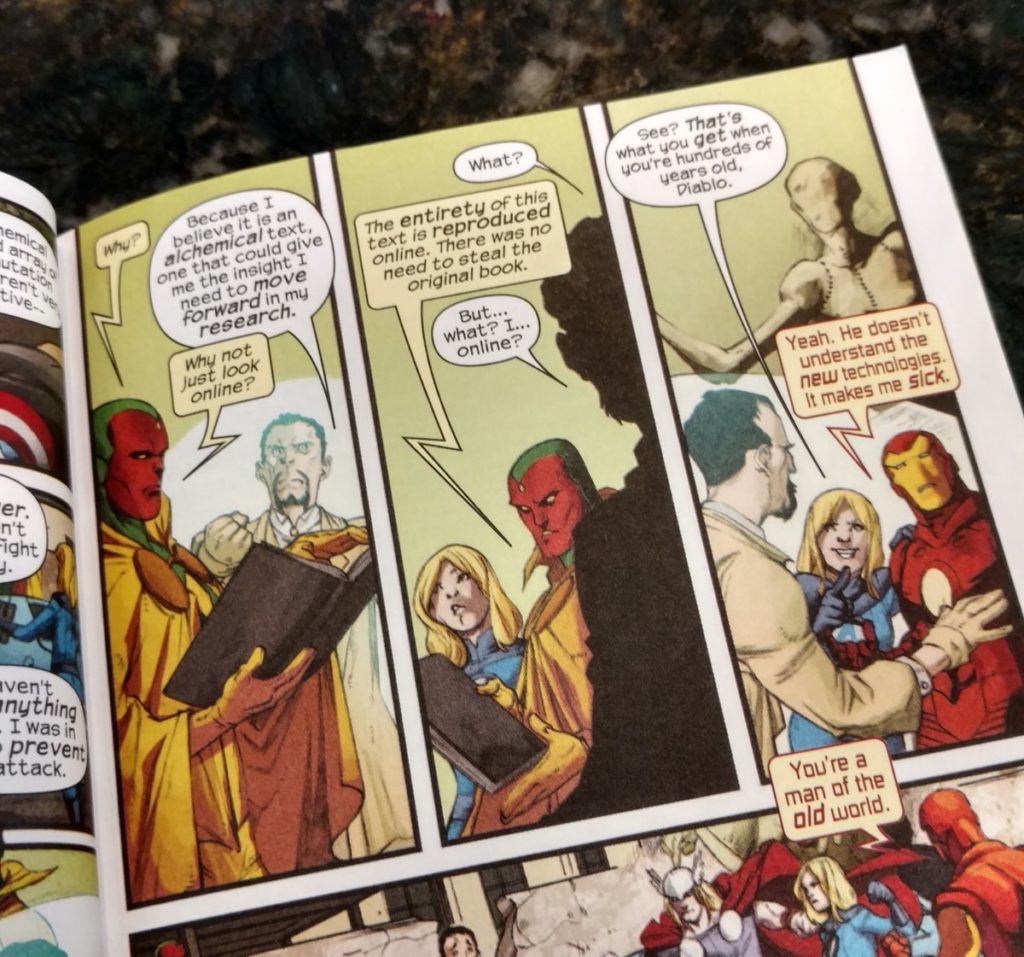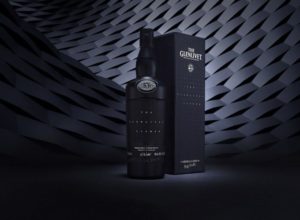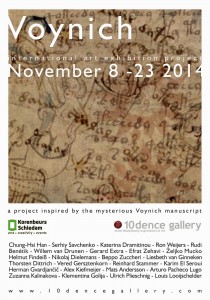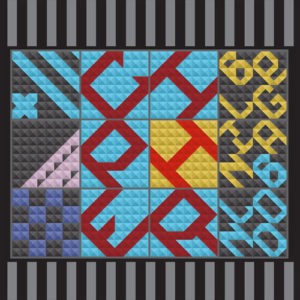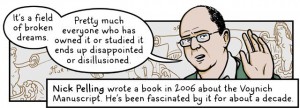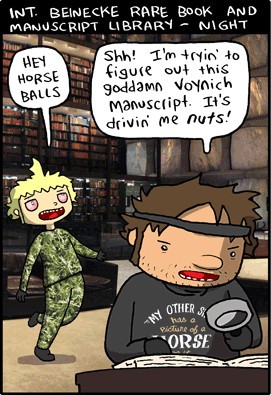Over the last few days here at Cipher Mysteries, I’ve had all kinds of ups and downs with the website, mainly to do with excessive levels of spam (which triggered account suspensions, etc). Anyway, I’ve now turned all the security dials to 12 (Spinal Tap must have got it wrong, because 11 apparently wasn’t high enough) and have added yet more Heath-Robinson bodgery to the webmaster scripts and configurations: fingers crossed it will make a positive difference. And I’ve finally got outgoing mails working again (how annoying was that?!), *sigh*
Regardless, it’s spring cleaning time: that is, time to clear out my short term collection of Voynich cultural mini-links, some of which you might even like. Arty Voynich appropriators first:-
‘Modestly’ (Anne Corr) is offering a 32-page hand-made book comprising images from the Voynich Manuscript. She says:-
There are eight folded pages each with four illustrations printed onto a lovely textured watercolour paper chosen for its excellence in print quality and longevity. I have used a coptic stitch with a faux leather cover, finished with a faux leather tie. It certainly gives the impression of a medieval book.
I hope she’s talking about her own book: as if we haven’t got enough trouble with Voynich theorists who similarly claim that the Voynich itself “gives the impression of a medieval book.” *shakes head, sighs*
Rather less obviously crafty is New Zealander Baron’s Selection, who (virtually) offers T-shirts via Zazzle themed around “Philosophy, Politics, general ‘intellectual’ stuff.” One is called Voynich #1 T-Shirt (f67r1), and the other Voynich #2 T-shirt (Scorpio).
Incidentally, I once won a big box of promo T-Shirts for suggesting that the right question for the answer “Above a grocer’s shop in Grantham” was “What was the setting for Ben Elton’s ‘Inferno’?” All of which was a very long time ago indeed, however you try to slice that particular gala pie.
And now we move on to Voynichian musicians.
Melbourne music producer Andrei Eremin has recently put out a track called Voynich Manoeuvre. I actually quite like it, but it has got a certain 9pm-in-a-Shoreditch-restaurant vibe to it that’s hard not to notice: music to drink overpriced urban cocktails to. But perhaps that’s the point, I don’t know.
Anyway, Arcadia Studios TV has a YouTube interview with Nelson Rebelo of rocking Portuguese underground band The Voynich Code to promote their debut single ‘Antithesis’: here’s the official video for it. The guitar lick at about 4:19 is quite cool, though the whole band then goes into a sequence where they all look they’re playing air guitar, even though most of them are holding guitars. Which is a bit odd.
All the same, my son points out (correctly, it has to be said) that Antithesis is hard to distinguish from the awesomely dark the Lego Movie Batman song, though The Voynich Code’s version possibly still gets the vote (by a whisker). But feel free to make up your own mind, pop pickers! And that’s just the first verse… 😉
Finally: some proper Voynichian miscellany.
Was the (15th century) Voynich Manuscript written in the (1987-vintage) conlang Lojban, perhaps through some kind of trickery involving Leonardo da Vinci and time travel? You know the answer already (I can only hope), but though this April Fool’s Day paper was inspired both by Talbert and Tucker and by Stephen Bax, the way it deciphers “penis” and “darseBar” surely combines technical correctness with historical mastery in a way that the preceding three authors can only dream of emulating in the future. Enjoy!
